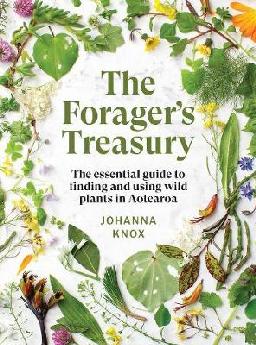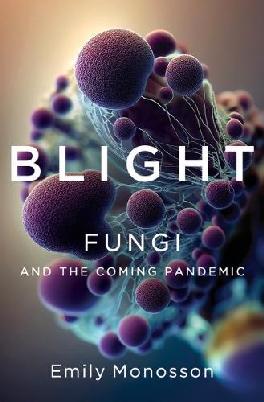Liv Sisson, Tūranga’s favorite “fun-guy,” arrived at the TSB space on Hapori on Wednesday evening. In the 20 to 30 minutes before the event, little groups of mushroom enthusiasts gathered around the mycology-themed display, silently prospecting the fungi-adjacent collection of books selected by enthusiasts on staff.
During the release of the book Fungi of Aotearoa I developed a type of mushroom mania that comes on every autumn. This year, I was seeking a field guide when walking past Arty Bees while in Pōneke. I saw Liv’s book was being released that very weekend! Unfortunately I tried three different bookstores in the city to no avail. On my return to Ōtautahi, I made a beeline from the airport to Scorpio Books. I even phoned them on my way there to check if they had it in stock. They did. I was overjoyed, stunned even. I spent the evening reading aloud to my foraging partner about all of the different species we could possibly find while fossicking around on nature walks.
The following day, I went straight to Orton Bradley Park, a short drive from my home. Inspired by Liv’s book, I began searching, noticing different spongy beasts poking out of the ground, each with its own unique character. Liv writes about their individual personalities, each with places they like to hide and trees they like to climb. Poppia spoke to a familiar excitement of mine too; to see where the porcini had been plucked from the ground by the exceptionally enthusiastic pre-dawn hunters. It is a sight that inspires both frustration from missing out and joy for a lucky forager, somewhere out there in the pre-dawn with a head torch.
Liv’s excitement about mushrooms was welcomed by her audience. She was dressed in a brightly coloured fungi-themed dress, with a special handmade badge adorned with the words “I’m a fun-girl.” Poppia, a first-time facilitator who had assisted with Liv’s research into the book, was able to share some of her own experiences in developing her knowledge of different local species.
Liv spoke about the library's different resources that she used while researching for the book and used our Book a Librarian service. Let me tell you from experience. There is nothing more exciting someone can ask a library worker than “can you help me with my research.”
I particularly enjoyed Liv speaking about how Aotearoa is very unusual in terms of its biodiversity. Because we are so far from any other large landmass, our native species have all evolved alongside each other, and their lives and fates are largely intertwined. Sisson also spoke to the relationships between our parasitic fungi and our native insects. Due to the decline of habitat and the pressing issue of monoculture (a lack of biodiversity) both some of our rare and most visually spectacular fungi and its associated insects are in a state of decline. This relationship between the different organisms speaks to how little we truly understand the delicate balance of nature and how it can be thrown quickly into chaos.
The lack of wider, institutional research into our native fungi was very clear, as Liv enlightened the audience; mycologists from Aotearoa estimate between 1 to 7 million different species of fungi have evolved here. Only a small number of them have been named. That leaves a lot of scope for further discovery! Sisson included around 130 of our most common fungi, with the idea that people could use her book as a field guide as well.
I found Sisson’s methodology for both foraging and identifying mushrooms very useful. She spoke to the idea of foraging as something that can be difficult to overcome when most Kiwis have been educated with “take only photos…leave only footprints” (I remember making a poster at about 10 years old of some abandoned jandals on a seashore, cynical Kiwiana at its finest) but champions the idea that if you are to give back in a way, to remove some litter, to teach someone else about respectful ways of foraging, to follow the etiquette of respectful foraging, no wrongdoing is happening. Common practice is to only take a small amount of the fruiting body and to ensure the mycelium stays intact so that it can fruit again in the future, for another keen forager to enjoy next season!
Poppia asked Liv to speak a little to traditional Māori uses for different fungi and/or mycelium, and Sisson spoke to the concern of Iwi to respect our Taonga species. We can and should engage in research with their different applications and medicinal properties. It is important that our Universities and other research institutions are in conversation with Iwi regarding protecting and uplifting our sacred species.
A lot of this knowledge is held within te ao Māori rongoā |medicine, but because we haven’t had many peer-reviewed studies it is an often-overlooked food and medicine source (although you may be familiar with the trendy mushroom supplements that have started to appear on the market). We also must protect the species that should only be foraged on a small scale and do not lend themselves to being cultivated and sold en masse. One interesting turn of events is that growing consumer interest in our native mycelium has led to a number of native mushrooms to be cultivated with at-home kits including the spectacular pekepeke-kiore (Hericium novae-zealandiae), a relative of the famous Chinese mushroom Lion’s Mane.
Liv Sisson is a bestselling author we are lucky enough to have based in Ōtautahi, she encouraged the audience, in their enthusiasm and thirst for more knowledge, to reach out into the scientific community and engage with other citizen scientists. Through shared interest and passion, it would appear a real sense of community is developing with mycologists, from amateur to seasoned.
Charlotte
Lyttelton Library / Content
More about Fungi of Aotearoa
- Liv Sisson: Aotearoa's fascinating and freaky fungi Saturday morning, RNZ
- Lynn Freeman's review on Nine to Noon, RNZ
- Follow Liv Sisson on Instagram @liv_sisson
- Follow Paula Vigus on Instagram @gapt.it_photography
More mycology
Find books about:
Vibrant Networks: Book launch for Fungi of Aotearoa report on the book launch at Scorpio Books, 7 June 2023







Add a comment to: The Curious World of Fungi with Liv Sisson